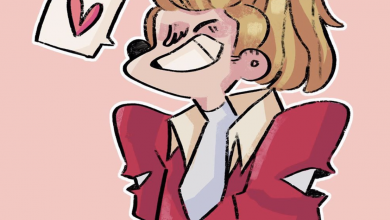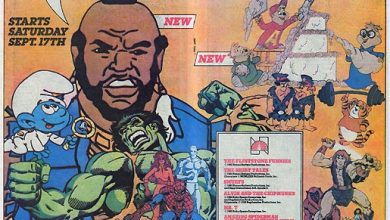From the Front of Another Fictional War – Pink!

Just when you thought that it was safe to put your cultural howitzer in storage for another year’s War on Christmas, a new battle cry has been sounded for 2014 – “Stop the War on Pink!” cries this piece, with a subhead that barely avoids every online feminist’s favorite phrase, “What about the men/boys/men?!?!?!”
Now, don’t get me wrong, I have issues with the bill of goods our culture sells our boys just as I do with girls. I don’t like that my son is assumed to like sports (he doesn’t), super heroes (he does), weapons, violent video games or that he is disinclined to play with household toys or imagine himself a member of royalty. I don’t like that men are often portrayed in the media as buffoons or ultra-sculpted ab machines. I don’t like that boys are actively dissuaded from anything perceived as “girly”, be it a pink t-shirt or a viewing of a Disney Princess movie
However, I’m not convinced that these are remotely separate issues, as opposed to sides of the same heavily gendered, stereotyped, patriarchal coin
First off, let’s look at some of the assumptions in this and similar pieces which purport to advocate for balance in gender-related activism. Just as with this HuffPo blog last year advocating an end to “girl power”, there is an underlying message that is pretty retrograde – that feminism has done its work and girls are now at least equal, if not even ahead of the marketing game.
And, sorry, but that is completely laughable. Have you even looked at a toy department recently? The authors of the “War on Pink” piece clearly have and they see the differences – dolls versus weapons, building toys vs play kitchens. They have clearly noticed an abundance of a certain color, but then they ask the following question: “What might this conversation look like if we focused not on getting rid of pink, princesses, or housekeeping toys, but on making these toys acceptable for everyone to play with.”
Which leads me to also think that they are more interested in creating straw-activists than reading up on what people are saying, since that take on things completely disregards pretty much every single person talking about this issue, including Rebecca Hains and Melissa Wardy of Pigtail Pals Ballcap Buddies who’ve also had some choice words on this particular work of misconstruction.
Let’s start with the title – no one I know is fighting a war on pink. Heck, I actually don’t mind it generally and it’s my daughter’s favorite color. The war, such as it is, is on strict gender divisions and limiting stereotypes on all children. The discussion has focused largely on girls because girls are automatically characterized as “other” with more limited and oppressive options. Additionally, that flip side for the boys? If girls are supposed to like housekeeping and fashion dolls to keep them in their place, boys are not supposed to like them because girl-space is not supposed to be a great place to be. Heck, by this notion, boys who like culturally coded “girly” things need “girl power” even more than the girls – because it is by raising feminine-coded toys, colors, programming and activities to the same level as masculine-and-default-coded selections that it it will become as acceptable for a boy to wear pink and like princesses as it is for a girl to wear blue and play soccer. (Well, hopefully more than that, actually, since there’s still a whole series of issues there.) I file this under “patriarchy hurts men too”, not an entirely separate movement that requires any ongoing activities to “stop”.
If we want to make kids more equal, and if we want to slow down harmful divisions between the sexes and allow kids more options for gender expression, the answer is not to drop one issue in favor of another. The answer is to recognize that everyone benefits from equality, not just one subset of humanity. Both girls and boys benefit from having more options and from having half the toy store back in play. So sure, let’s stop the fictional war on pink. But I’m not going to stop fighting for better options to be marketed to girls, because that actually means more options for all kids, whether other people see it or not.
Image by Frank Hebbert





I have a love-hate relationship with pink. Better said, I don’t understand half of it.
First it usually signifies girlie-crap. Not that there isn’t an equal amount of boy-crap, mind you, but those things, they are just objectively crap, focussing on cleaning, cooking and being pretty.
And then you take something that isn’t girlie, and you do it in oink, and suddenly it is. So I use it as a tool to broaden my daughters’ options.
As I said, I don’t understand it.
Pink has become such a shorthand for everything wrong with toy marketing that it’s no wonder that it can be hard to understand. Personally, my issue is as much with marginalizing the traditionally feminine as it is with limiting girls options to those arenas -I don’t have an issue with a pink microscope or a pink tool chest or a pink bicycle being among a multitude of options, so long as the quality is the same and they are marketed as just that – equal options. When there’s a “neutral” black or red or blue option and a “for girls” pink or purple one, that’s when my head starts to explode. (See also my mixed reaction nattering about Lego Friends: http://notimpressed.wordpress.com/2012/02/07/lego-bricking-themselves-in/)
Great post. I get so tired of the: “girls are lucky. They have more choices in ______ (clothes, toys, etc), because they can choose boy _____ and be cool.” It’s not really awesome that everything culturally associated with you is a priori coded as “not cool” and “less than”. Somehow that doesn’t strike these people.
Thanks! That’s part of what gets me about the Girl Power post I cited (and probably why I remember it a year later) – it’s such a privileged position to see one subset of media and proceed to complain that boys are not adequately and positively represented. I get that it’s a hard conversation – because it’s a conversation we have about girls in media ALL THE TIME.
Great post, and a conversation we need to keep having until the inequality is fixed.